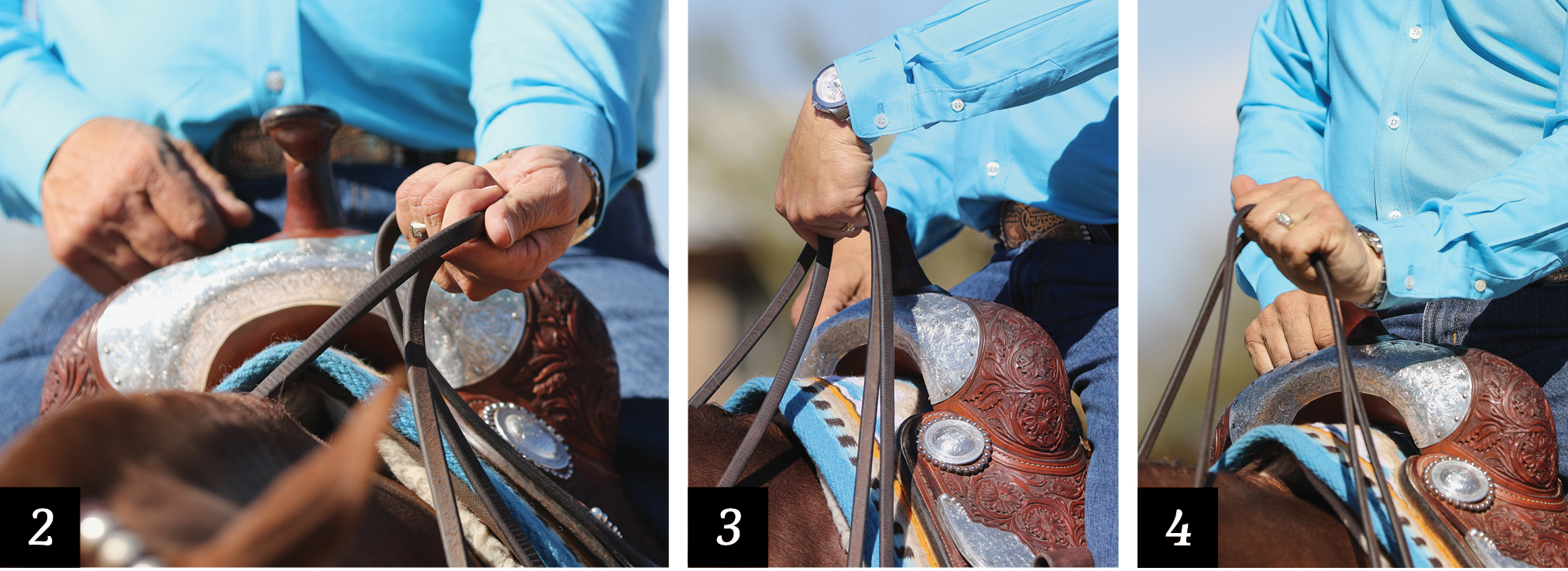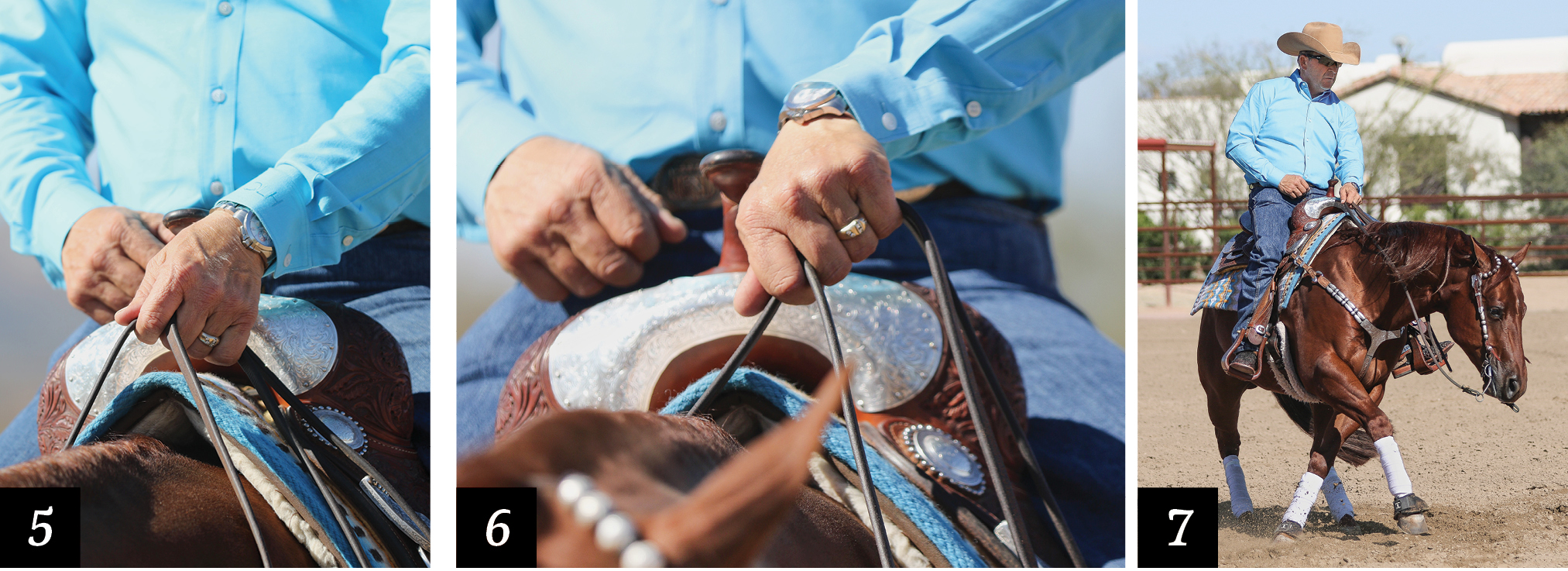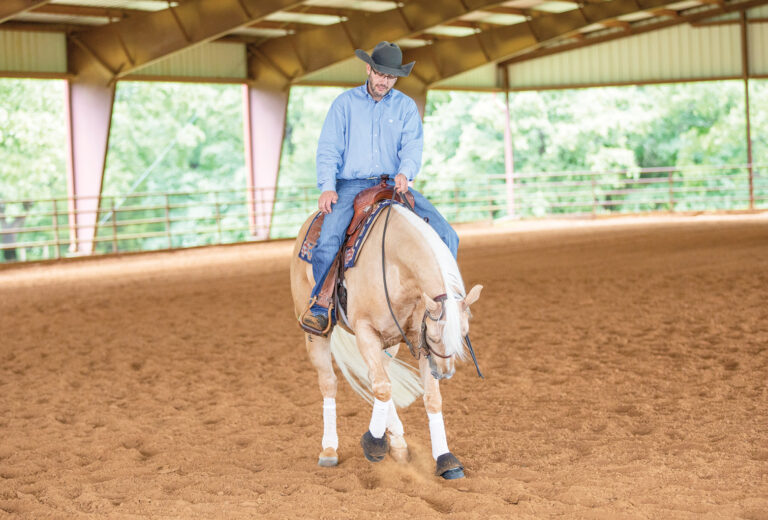
If you constantly ride with your hand left or right of center, you’re unknowingly giving mixed signals to your horse. If you keep your hand in that position at all times, you’ll eventually teach him to ignore the neck rein cue completely, making it much more difficult to guide him.
Here, I show you several mistakes I see riders make with their hands when they’re trying to steer their horses in a one-handed bridle and show you the correct way to hold your hand.
[READ MORE: Ride With Soft Hands]
One
This is the first mistake I see riders make. Not only do I have my left hand far away from my saddle horn trying to pull my horse over, I also have my wrist twisted so my fingers are pointing up to the sky. I’m also looking in the opposite direction I’m trying to go. Because of my hand and body position, my horse has no other option but to turn his head to the right and lean into his left shoulder, making it difficult to guide him to the left.

Two
Another mistake riders run into is when they twist their wrists around. This can happen when riders are instructed to keep their arms locked in and their elbows next to their sides, leaving them with limited mobility. When you flip your hand over so your fingers are pointing up, you lose any feel in your fingers and instead have to move your whole wrist to get a response. You’ll notice my reins are also uneven, causing more pressure on my right rein, which means I’m pulling my horse’s head over to the right.
[READ MORE: Invisible Western Riding Cues]
Three
The next mistake I see riders make is a position I call piano hands. While you want to have a small tilt in your wrist, when you bend your wrist that far down, you lose any feel you might have with your fingers, and any ability to move your hand around, meaning you will have to move your entire arm to get any response.
Four
Opposite of piano hands is when your wrist is bent 90 degrees up. This position is worst because you have a constant pull on the reins, which causes your horse to become dull to any cue you give him. Similar to Photo 3, when you bend your wrist this much, you lose any ability to move your wrist around and can’t use your fingers properly.

Five
To avoid those mistakes, I keep my hand centered and in a neutral position. I slightly tilt my wrist down with my thumb pointed up and my pinky finger angled down and have my reins even on both sides. My first source of contact when asking my horse to steer is with my fingers, so I keep my fingers relaxed and adjust pressure as needed. I also create an imaginary 8-inch box around my saddle horn and keep my hand within that box to stay in an effective position.
Six
When guiding my horse to the left, I like to slightly twist my left wrist, so my fingers are higher than my thumb, and I keep a slight bend in my elbow. This position gives me full control over my wrist, and it also allows me to open and close my fingers as needed. This hand position also ensures that if I need to ask for more contact with my horse, I’ll continue to have an even pull on both reins and avoid having my right rein pull my horse’s head to the outside.
Seven
Here, I’m asking my horse to spin to the left. I release my left leg, look in the direction I’m turning, and move my hand just slightly to have that neck rein touch my horse. When going in this direction, I have a minor bend in my elbow, and I keep my hand in a similar position to Photo 6, so I can have even contact on both reins.
[READ MORE: Rein Management]






